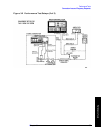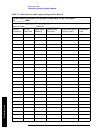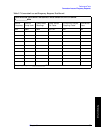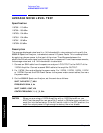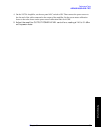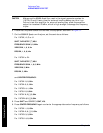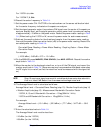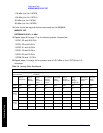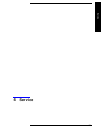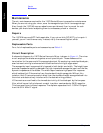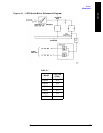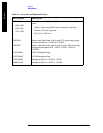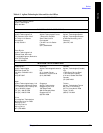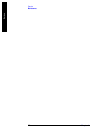
74 Chapter 4
Service
Maintenance
Service
Maintenance
The only maintenance required for the 11970 Series Mixers is preventive maintenance.
When you are not using your mixer, cover its waveguide input with its waveguide cap.
Also, though the 11970 Mixers can absorb more punishment than is normal for such
devices, you should avoid subjecting them to unnecessary shock or vibration.
Repairs
The 11970 Mixers are NOT field-repairable. If your mixer fails, DO NOT try to repair it
yourself, you will void the warranty. Instead, notify the nearest Agilent office.
Replaceable Parts
For a list of replaceable parts and accessories, see Table 4-2.
Circuit Description
A schematic diagram of a 11970 Series Harmonic Mixer is shown in Figure 4-1. The mixer
circuit employs two diodes arranged as an anti-parallel pair. These diodes are the
termination for the open end of the waveguide output. By employing a matched diode pair,
even harmonic mixing is enhanced while odd harmonic mixing is suppressed.
The waveguide input is exponentially tapered in both height and width. The height taper
provides impedance matching between the high impedance waveguide input and the low,
dynamic impedance of the diodes. The width taper creates a high-pass filter response
which isolates the LO harmonics from the standard-height waveguide. Without this
isolation, the LO harmonics would reflect from the standard-height waveguide back into
the mixer and destructively interfere with the desired mixing product.
LO harmonics are confined to the immediate vicinity of the diode pair by the low-pass
filter, which has as its first element a metal -insulator -semiconductor (MIS) capacitor.
This improves the out-of-band response. The diplexer separates the 3 - 6 GHz LO signal
from the 321.4 MHz IF signal.





